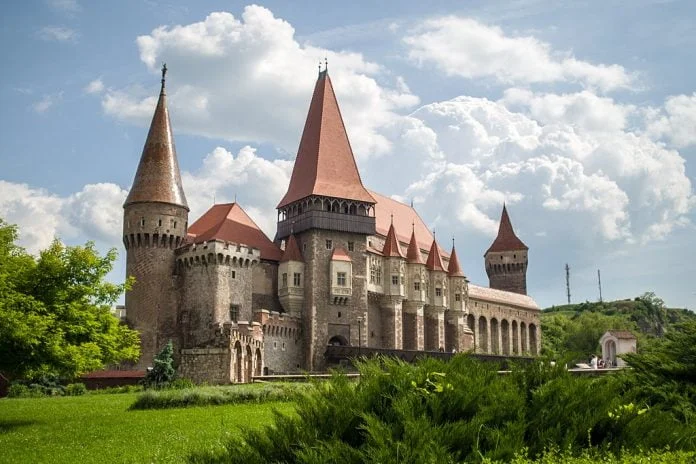The Abandoned Castle of Corvin in Romania

The Corvin Castle, also known as Hunyadi Castle, is one of Romania’s most striking and enigmatic landmarks. Nestled in the heart of Transylvania, this majestic Gothic structure stands as a symbol of Romania’s rich medieval history. Famous for its captivating architecture, its history, and its association with one of the most powerful families of the time, Corvin Castle is now a haunting reminder of Romania’s past, often considered an abandoned marvel that attracts curious tourists and explorers from all over the world.

Built between the 14th and 15th centuries, Corvin Castle was the seat of the Hunyadi family, including the legendary John Hunyadi, a 15th-century Hungarian military leader. Its imposing towers, massive stone walls, and picturesque bridge over a deep ravine are characteristic of the Gothic style, giving it a fairy-tale-like appearance. The castle served both as a royal residence and a strategic military fortress, making it an integral part of Transylvanian history. However, despite its historical significance, parts of the castle have fallen into disrepair over the centuries.
The History of Corvin Castle

Corvin Castle’s history dates back to the mid-14th century when it was initially built by King Charles I of Hungary. The castle’s architecture reflects the military needs of the time, featuring thick walls, high towers, and a fortified entrance. It was further expanded and transformed into its current form by the Hunyadi family in the 15th century. The castle was designed to withstand invasions and was strategically placed near a river, giving it both a defensive advantage and a majestic view.
After the fall of the Hunyadi dynasty, the castle was passed into various hands, enduring many political upheavals. In the 17th century, parts of the castle were neglected, but it continued to serve as a residence for local nobility. By the 19th century, the castle fell into a state of decay, becoming largely abandoned by the early 20th century.
Architectural Features of Corvin Castle

Corvin Castle is renowned for its stunning Gothic architecture, which includes a collection of soaring towers, intricate stonework, and beautiful stained-glass windows. The castle’s most iconic feature is its honorary bridge, a wooden bridge that connects the main entrance with the courtyard. This bridge adds to the castle’s dramatic allure, evoking images of medieval knights and noble families. The interior of the castle contains lavish halls and chambers, including the Knight’s Hall and the imposing great hall, which are adorned with period furniture and historical artifacts.
Corvin Castle Today

Though Corvin Castle has suffered from neglect and the ravages of time, efforts to preserve and restore it have begun. The structure, though not as pristine as it once was, continues to be one of Romania’s most visited tourist attractions. The castle is now accessible to the public, where visitors can tour its ancient halls, admire the architectural details, and delve into its rich history. However, there remains a sense of mystery about the castle, with its partially decayed walls and empty chambers giving it an eerie atmosphere, perfect for those fascinated by history and the abandoned.
The Corvin Castle’s ruins tell a story of a once-thriving fortress that has now become a symbol of both Romania’s medieval past and the passage of time. Its location in the breathtaking Transylvanian countryside adds an air of mystery, making it one of the most captivating abandoned sites in Europe.

Whether you are a history enthusiast or a lover of haunting architecture, Corvin Castle is a must-visit site in Romania. Its blend of gothic beauty, historical significance, and eerie ambiance make it an unforgettable location for those interested in exploring abandoned places and learning about Romania’s fascinating history.